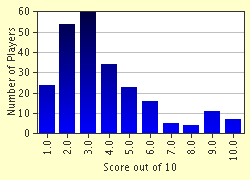Quiz Answer Key and Fun Facts
1. On a cold December morning in 1985, world famous primatologist, Dian Fossey, was horribly murdered. On what day in December was her body found?
2. The story of the murder of Dian actually begins when she was brought to Africa to study the Mountain Gorillas. World famous paleontologist, Dr. Louis Leakey, asked Dian to do a long-term study of endangered Gorillas. At first, Dian was sent to the Congo (now Zaire), but was forced to leave. Dian then went to which African country to begin anew her study of the endangered species?
3. During Dian's time in the Virungas, she was active in anti-poaching patrols. When her trackers and park officials captured the marauding poachers in the protected mountains, they were brought back to Dian. Dian would then horrify the poachers by torturing them. What was her preferred method of torturing the poachers?
4. Dian shot at cattle and kidnapped native children for the protection of the Mountain Gorillas.
5. From 1970 until 1985, Dian's research center hosted a number of up and coming research students. What is the name of Dian's research center, which is still active in helping to preserve the Mountain Gorillas?
6. In 1970, a research student by the name of Alan Goodall came to Dian's camp in the Virungas. Dian trained him because she was leaving for six weeks on a trip to the United States. During the six weeks that she was gone, Goodall shot two poachers in their legs. As revenge for this action, six Mountain Gorillas were slain. What is the name of the African village where the Gorillas were murdered?
7. From almost the time that Dian began studying the Mountain Gorillas, she had one constant tracker. Six months after her murder, Dian's tracker was arrested and placed in jail for her murder. What was the name of her tracker?
8. In 1985, an American research student was at Dian's camp. It had taken the student four years to get Fossey's consent to be on the mountain. Six months after her murder, this student fled to America. What is the name of this student?
9. When Dian's body was discovered on that cold December morning, one very important piece of evidence was discovered. What was this evidence?
10. On June 9, 2001, the murderer of Dian Fossey was captured. What is this man's name?
Source: Author
DakotaNorth
This quiz was reviewed by FunTrivia editor
Lanni before going online.
Any errors found in FunTrivia content are routinely corrected through our feedback system.

